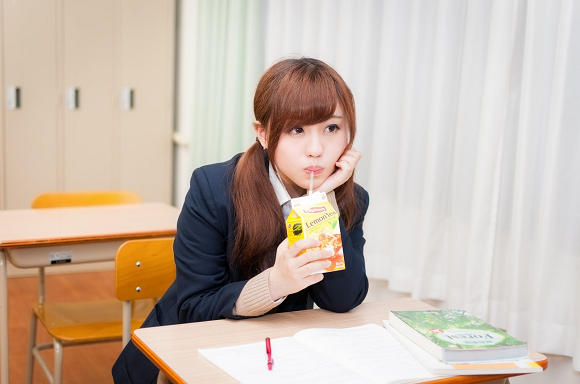
Anime isn’t like reality: High school days edition.
Compared to other forms of media, Japanese animation has always had a penchant for teenage protagonists, and the rising popularity of slice-of-life-genre anime means that every TV season in Japan has multiple shows depicting characters in an ostensibly ordinary high school setting. But as we’ve seen in the past, anime and reality can sometimes be very different things, and that’s true for anime and real-world high schools as well.
Internet portal My Navi Gakusei no Madoguchi recently polled 114 anime fans who’re currently in college, meaning they’ve all had a complete Japanese high school experience. Researchers asked the survey participants what scenarios they often see in high school anime that don’t really happen with actual high school students, and the following four responses were the stand-outs.
1. High school students who live by themselves
Whether because their parents died, remarried, or moved overseas for work, many anime protagonists have their own private residence, which helps to facilitate regular clandestine visits from flirtatious members of the opposite sex. But in reality, you’re about as unlikely to find a high school student with his or her own apartment in Japan as you are in the U.S. or any other developed Western country. “Unless it’s in a boarding school dormitory, I’ve never seen or heard of an actual high school student living on their own,” said one respondent.
2 The student council wields incredible power
While youth is idolized in Japanese society, authority almost always rests with those with greater experience (and thus age). That goes double for high school administration, as the students are gearing up for their college entrance exams, which are eminently important in a country where employers place a great value on the prestige of the school where an applicant obtained his or her higher education.
So really, the situation presented by many anime, in which the student council has the ability to make significant decisions regarding school rules and operations, is pretty ridiculous. “I was a member of the student council,” recalled one survey participant, “and we didn’t have much actual authority.”
3. Rooftop escapades
Setting a story in a school is a double-edged sword for anime creators. On the one hand, having all your characters in the same place makes it easy for whatever characters you want in a scene to bump into one another or quickly assemble. But on the other hand, it also makes it impossible to give your characters much privacy for solitary reflection, intimate conversations, or other such impactful story beats.
So the go-to solution is to set such scenes on the roof. This even gives you the bonus benefit of using the color and conditions of the sky and surrounding scenery to highlight whatever emotion you want to convey, pairing flittering cherry blossoms for wistful romanticism or gathering storm clouds for impending troubles.
However, one thing a rooftop scene doesn’t provide is added realism. “You often see anime characters run up to the roof when they’re upset about something, but in my school we weren’t allowed up there,” replied one participant.
But hey, teens break the rules all the time, right? Sure, but a rebellious streak isn’t going to help when “the schools lock the doors to the roof,” as another respondent matter-of-factly explained.
4. The school is filled with handsome guys and beautiful girls
“There just aren’t that many good-looking people in a real high school,” pointed out one survey participant. If you were judging only from anime character designs, you might think that Japanese high schools were filled with individuals with perfectly styled hair, flawless skin, and professional athlete or model-caliber physiques.
The truth, though, is that in Japanese high schools you’ll see acne, gangly limbs, lingering baby fat, messy hair hastily combed after oversleeping, and all the other awkward aspects of the human landscape to be observed in a group of teens whose bodies are still finishing the awkward transition from childhood to adulthood.
Of course, while that visual awkwardness is a more or less universal part of the process of growing up, it’s not necessarily a pleasant one. Working in a medium in which the creators have complete visual control, it’s not hard to see why anime artists would want to smooth out some of the rough edges of adolescence, helping foster an atmosphere of coolness for viewers who’re currently teens themselves, and providing a bit of happy nostalgia for older viewers. Pretty much the same thing can be said about everything else on this list, as each serves to raise the dramatic stakes and/or give the characters more immediate control over their own fates, which makes for a more satisfying narrative, if not necessarily a more realistic one.
Source: My Navi Gakusei no Madoguchi via Hachima Kiko
Top image: Pakutaso
Insert images: Pakutaso (1, 2, 3)
Follow Casey on Twitter, where his own high school days were also very un-anime-like (except for the fact that he watched so much anime during them).

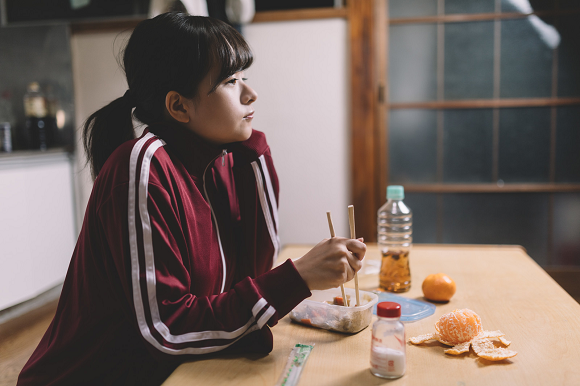
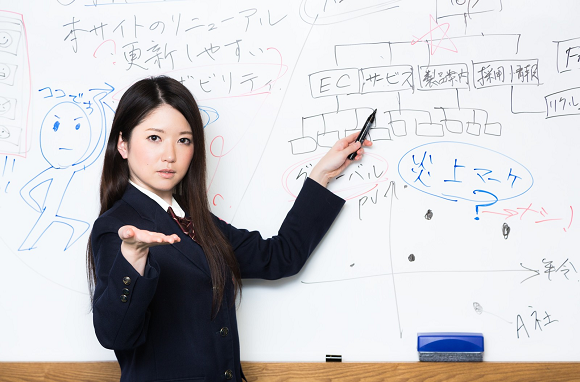
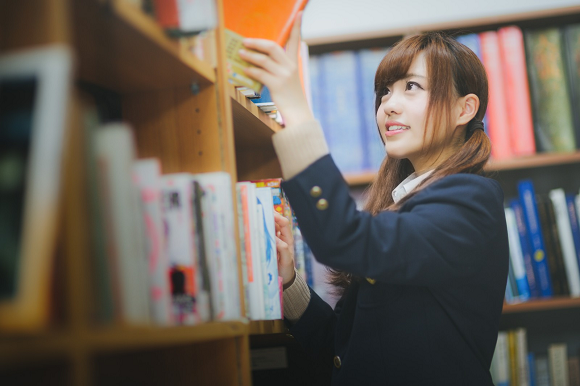
 Anime isn’t like reality: High school days edition
Anime isn’t like reality: High school days edition Five anime/manga series praised by Japanese fans for their realistic human relationships【Survey】
Five anime/manga series praised by Japanese fans for their realistic human relationships【Survey】 Anime Isn’t Like Reality: Peeing in a skirt edition
Anime Isn’t Like Reality: Peeing in a skirt edition Petition to allow students to choose what they wear to school gathers almost 19,000 signatures
Petition to allow students to choose what they wear to school gathers almost 19,000 signatures Japanese schools are losing their pools due to rising maintenance costs and aging facilities
Japanese schools are losing their pools due to rising maintenance costs and aging facilities Sandwiches fit for a sumo served up in Osaka【Taste Test】
Sandwiches fit for a sumo served up in Osaka【Taste Test】 McDonald’s new Happy Meals offer up cute and practical Sanrio lifestyle goods
McDonald’s new Happy Meals offer up cute and practical Sanrio lifestyle goods Japan’s massive matcha parfait weighs 6 kilos, contains hidden surprises for anyone who eats it
Japan’s massive matcha parfait weighs 6 kilos, contains hidden surprises for anyone who eats it Historical figures get manga makeovers from artists of Spy x Family, My Hero Academia and more
Historical figures get manga makeovers from artists of Spy x Family, My Hero Academia and more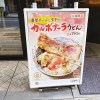 Limited-edition Carbonara Udon will anger noodle purists and pasta lovers 【Taste test】
Limited-edition Carbonara Udon will anger noodle purists and pasta lovers 【Taste test】 Beautiful Red and Blue Star luxury trains set to be Japan’s new Hokkaido travel stars
Beautiful Red and Blue Star luxury trains set to be Japan’s new Hokkaido travel stars Tokyo Tsukiji fish market site to be redeveloped with 50,000-seat stadium, hotel, shopping center
Tokyo Tsukiji fish market site to be redeveloped with 50,000-seat stadium, hotel, shopping center Japanese ramen restaurants under pressure from new yen banknotes
Japanese ramen restaurants under pressure from new yen banknotes Red light district sushi restaurant in Tokyo shows us just how wrong we were about it
Red light district sushi restaurant in Tokyo shows us just how wrong we were about it Studio Ghibli glasses cases let anime characters keep an eye on your spectacles
Studio Ghibli glasses cases let anime characters keep an eye on your spectacles All-you-can-drink Starbucks and amazing views part of Tokyo’s new 170 meter-high sky lounge
All-you-can-drink Starbucks and amazing views part of Tokyo’s new 170 meter-high sky lounge French Fries Bread in Tokyo’s Shibuya becomes a hit on social media
French Fries Bread in Tokyo’s Shibuya becomes a hit on social media Studio Ghibli releases new action figures featuring Nausicaä of the Valley of the Wind characters
Studio Ghibli releases new action figures featuring Nausicaä of the Valley of the Wind characters New private rooms on Tokaido Shinkansen change the way we travel from Tokyo to Kyoto
New private rooms on Tokaido Shinkansen change the way we travel from Tokyo to Kyoto Beautiful Ghibli sealing wax kits let you create accessories and elegant letter decorations【Pics】
Beautiful Ghibli sealing wax kits let you create accessories and elegant letter decorations【Pics】 Studio Ghibli releases Kiki’s Delivery Service chocolate cake pouches in Japan
Studio Ghibli releases Kiki’s Delivery Service chocolate cake pouches in Japan New definition of “Japanese whiskey” goes into effect to prevent fakes from fooling overseas buyers
New definition of “Japanese whiskey” goes into effect to prevent fakes from fooling overseas buyers Our Japanese reporter visits Costco in the U.S., finds super American and very Japanese things
Our Japanese reporter visits Costco in the U.S., finds super American and very Japanese things Studio Ghibli unveils Mother’s Day gift set that captures the love in My Neighbour Totoro
Studio Ghibli unveils Mother’s Day gift set that captures the love in My Neighbour Totoro New Japanese KitKat flavour stars Sanrio characters, including Hello Kitty
New Japanese KitKat flavour stars Sanrio characters, including Hello Kitty More foreign tourists than ever before in history visited Japan last month
More foreign tourists than ever before in history visited Japan last month New Pokémon cakes let you eat your way through Pikachu and all the Eevee evolutions
New Pokémon cakes let you eat your way through Pikachu and all the Eevee evolutions Sales of Japan’s most convenient train ticket/shopping payment cards suspended indefinitely
Sales of Japan’s most convenient train ticket/shopping payment cards suspended indefinitely Sold-out Studio Ghibli desktop humidifiers are back so Totoro can help you through the dry season
Sold-out Studio Ghibli desktop humidifiers are back so Totoro can help you through the dry season Japanese government to make first change to romanization spelling rules since the 1950s
Japanese government to make first change to romanization spelling rules since the 1950s Ghibli founders Toshio Suzuki and Hayao Miyazaki contribute to Japanese whisky Totoro label design
Ghibli founders Toshio Suzuki and Hayao Miyazaki contribute to Japanese whisky Totoro label design Doraemon found buried at sea as scene from 1993 anime becomes real life【Photos】
Doraemon found buried at sea as scene from 1993 anime becomes real life【Photos】 Tokyo’s most famous Starbucks is closed
Tokyo’s most famous Starbucks is closed One Piece characters’ nationalities revealed, but fans have mixed opinions
One Piece characters’ nationalities revealed, but fans have mixed opinions We asked a Uniqlo employee what four things we should buy and their suggestions didn’t disappoint
We asked a Uniqlo employee what four things we should buy and their suggestions didn’t disappoint Princesses, fruits, and blacksmiths: Study reveals the 30 most unusual family names in Japan
Princesses, fruits, and blacksmiths: Study reveals the 30 most unusual family names in Japan Japanese teacher beats up student for making fun of his body by calling him anime character name
Japanese teacher beats up student for making fun of his body by calling him anime character name High schooler “forced” to quit school sues Kumamoto prefecture for a single yen
High schooler “forced” to quit school sues Kumamoto prefecture for a single yen Do Japanese men like it when real women speak in anime-style voices? Survey investigates
Do Japanese men like it when real women speak in anime-style voices? Survey investigates What’s more important in making a great anime, characters or story? Japanese fans sound off
What’s more important in making a great anime, characters or story? Japanese fans sound off How often do Japanese high school kids watch anime, and do boys and girls watch the same series?
How often do Japanese high school kids watch anime, and do boys and girls watch the same series? Tokyo public schools will stop forcing students with non-black hair to dye it, official promises
Tokyo public schools will stop forcing students with non-black hair to dye it, official promises Goku down! Vast majority of surveyed college students in Japan haven’t read the Dragon Ball manga
Goku down! Vast majority of surveyed college students in Japan haven’t read the Dragon Ball manga Public schools in Japan’s Saga Prefecture will no longer regulate/check students’ underwear color
Public schools in Japan’s Saga Prefecture will no longer regulate/check students’ underwear color “Students are only allowed three sneezes in class” Japanese people share their worst school rules
“Students are only allowed three sneezes in class” Japanese people share their worst school rules Instagram ideals vs reality: “Boyfriend buys me Pocari Sweat” photo isn’t what it seems
Instagram ideals vs reality: “Boyfriend buys me Pocari Sweat” photo isn’t what it seems Japanese schoolgirl points out an especially dumb part of her school’s “no tights” dress code
Japanese schoolgirl points out an especially dumb part of her school’s “no tights” dress code Kyoto families angered by new policy forcing high school students to buy tablets at own expense
Kyoto families angered by new policy forcing high school students to buy tablets at own expense Japanese politician tries to teach teenage girl a valuable lesson by giving her a dying pigeon
Japanese politician tries to teach teenage girl a valuable lesson by giving her a dying pigeon All-boys’ high school in Japan has mandatory grooming lesson, teaches about skincare, hairstyling
All-boys’ high school in Japan has mandatory grooming lesson, teaches about skincare, hairstyling Japan’s legal age of adulthood dropping by two years, but do teens understand what that means?
Japan’s legal age of adulthood dropping by two years, but do teens understand what that means?
Leave a Reply